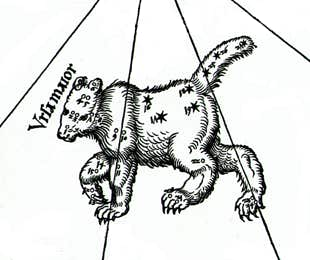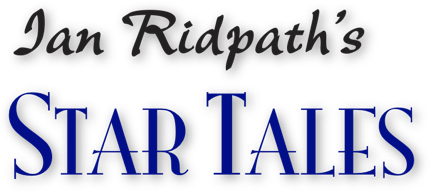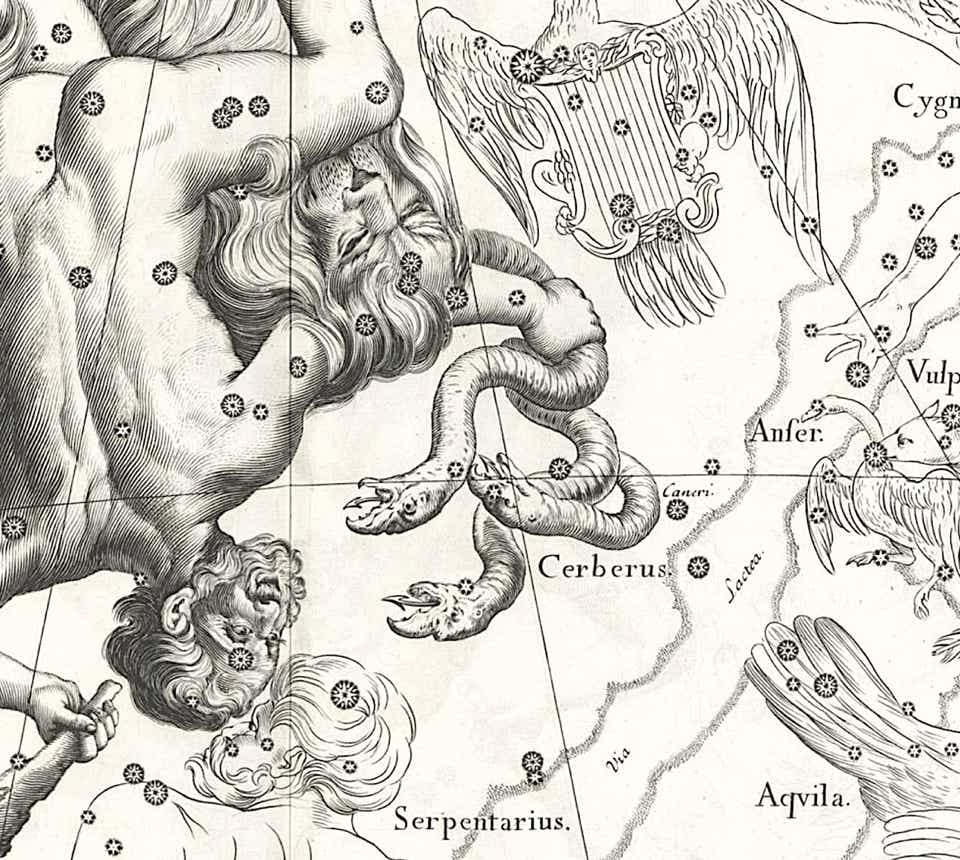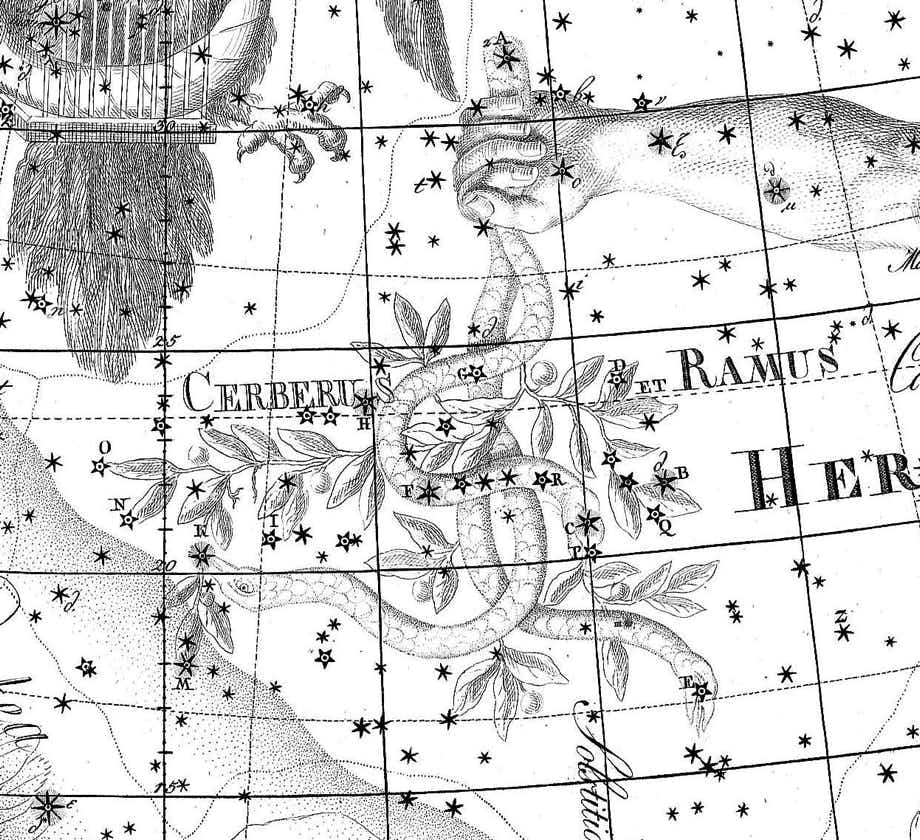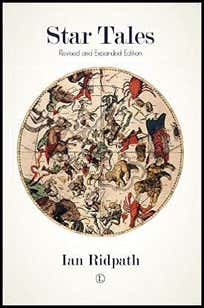
Cerberus (or Kerberos in Greek) was the triple-headed monster that guarded the gates of Hades, the realm of the dead, preventing the living from entering and the dead from leaving. As the last and most dangerous of his 12 labours Hercules was sent to the Underworld to capture this fearsome beast. He wrestled the creature into submission with his bare hands and dragged it, writhing and resisting, from the darkness of the Underworld to the unaccustomed brightness of the surface where its triple barking filled the air. The constellation commemorating this feat was added to the sky by Johannes Hevelius in his catalogue of 1687; on the accompanying atlas he depicted Cerberus grasped in the outstretched left hand of Hercules (see below).
Cerberus consisted of the four stars we now know as 93, 95, 102, and 109 Herculis (R. H. Allen wrongly states 96 Herculis to have been a member). Although, in mythology, Cerberus was said to be a three-headed dog, Hevelius and all subsequent map makers illustrated it with three snake heads.
Hercules grips the three-headed Cerberus in a stranglehold, as seen on the Firmamentum Sobiescianum star atlas of Johannes Hevelius (1690). The constellations on Hevelius’s charts were drawn in mirror image, as they would appear on a celestial globe.
Ramus, the apple branch
Hevelius’s Cerberus replaced another figure, the branch from the tree of the golden apples, that Johann Bayer had previously depicted in the hand of Hercules. Bayer’s elaborate apple branch consisted of 10 stars in the region of the present-day 93 to 113 Herculis. R. H. Allen in his book Star Names says that Bayer called the apple branch Ramus Pomifer, but this is not entirely correct; Bayer used the Latin term ramum pomiferum to refer to the apple branch held by Hercules, but the specific name Ramus Pomifer seems to have first appeared with Alexander Jamieson on Plate 8 of his Celestial Atlas of 1822.
Cerberus and Ramus combined
Further modifications were to come after Hevelius’s introduction of Cerberus. In or around 1721 the English cartographer and engraver John Senex (1678–1740), a friend of Edmond Halley, combined Cerberus with Bayer’s apple branch to produce what he labelled Ramus Cerberus. This combined figure first appeared on Senex’s chart of the northern celestial hemisphere, Stellarum Fixarum Hemisphaerium Boreale, which was based on Halley’s pirate edition of Flamsteed’s unfinished star catalogue. Johann Bode subsequently showed the combined figure on his Uranographia atlas of 1801 under the name Cerberus et Ramus (see illustration below). However, Flamsteed’s own chart of Hercules, eventually published in his Atlas Coelestis of 1729, includes neither Cerberus nor Ramus; instead, Hercules is drawn grasping thin air.
Cerberus et Ramus, the three-headed monster entwined with an apple branch,
shown on Chart VIII of the Uranographia of Johann Bode (1801). Its brightest star, 109 Herculis, magnitude 3.8, was labelled F by Bode.
© Ian Ridpath. All rights reserved
